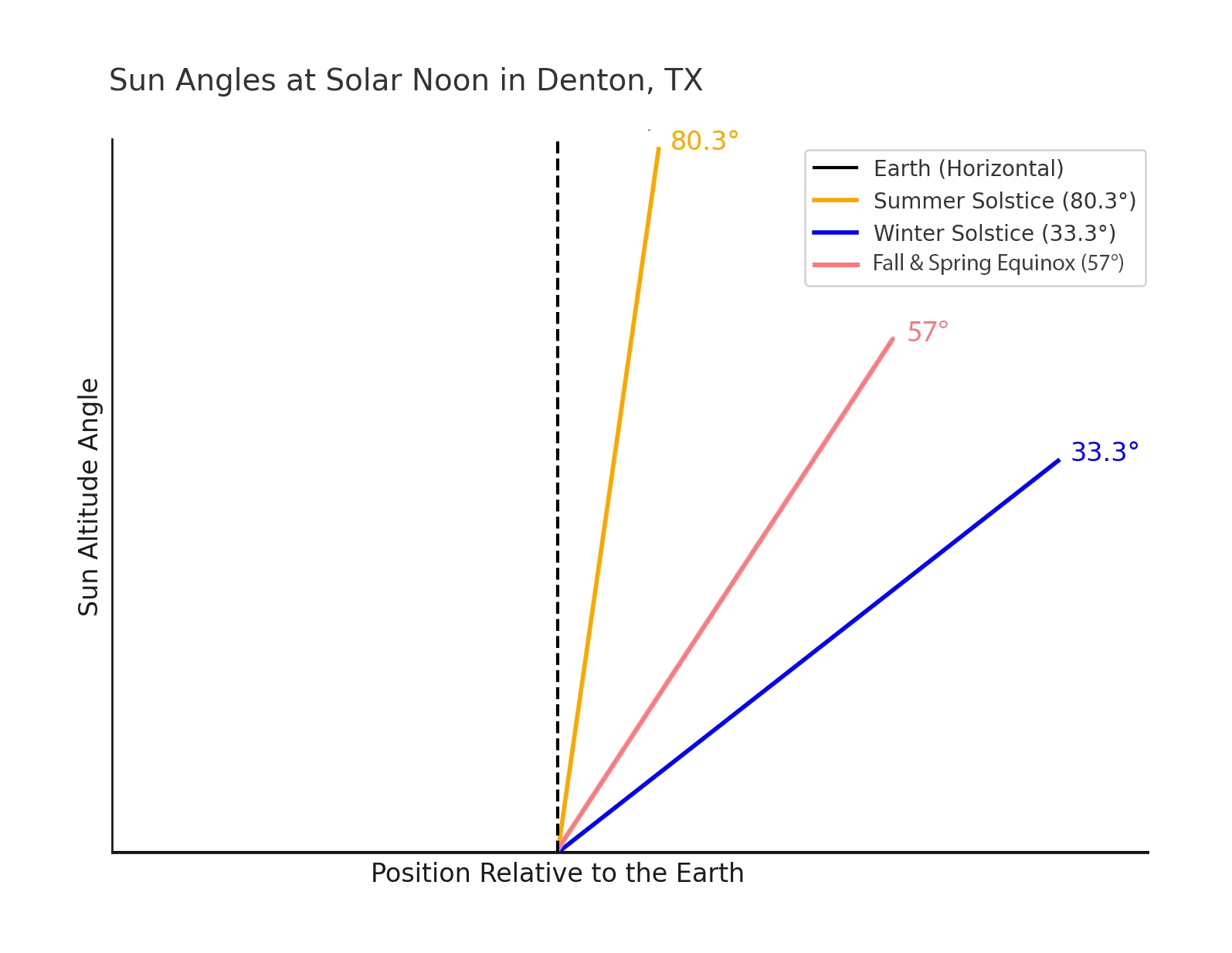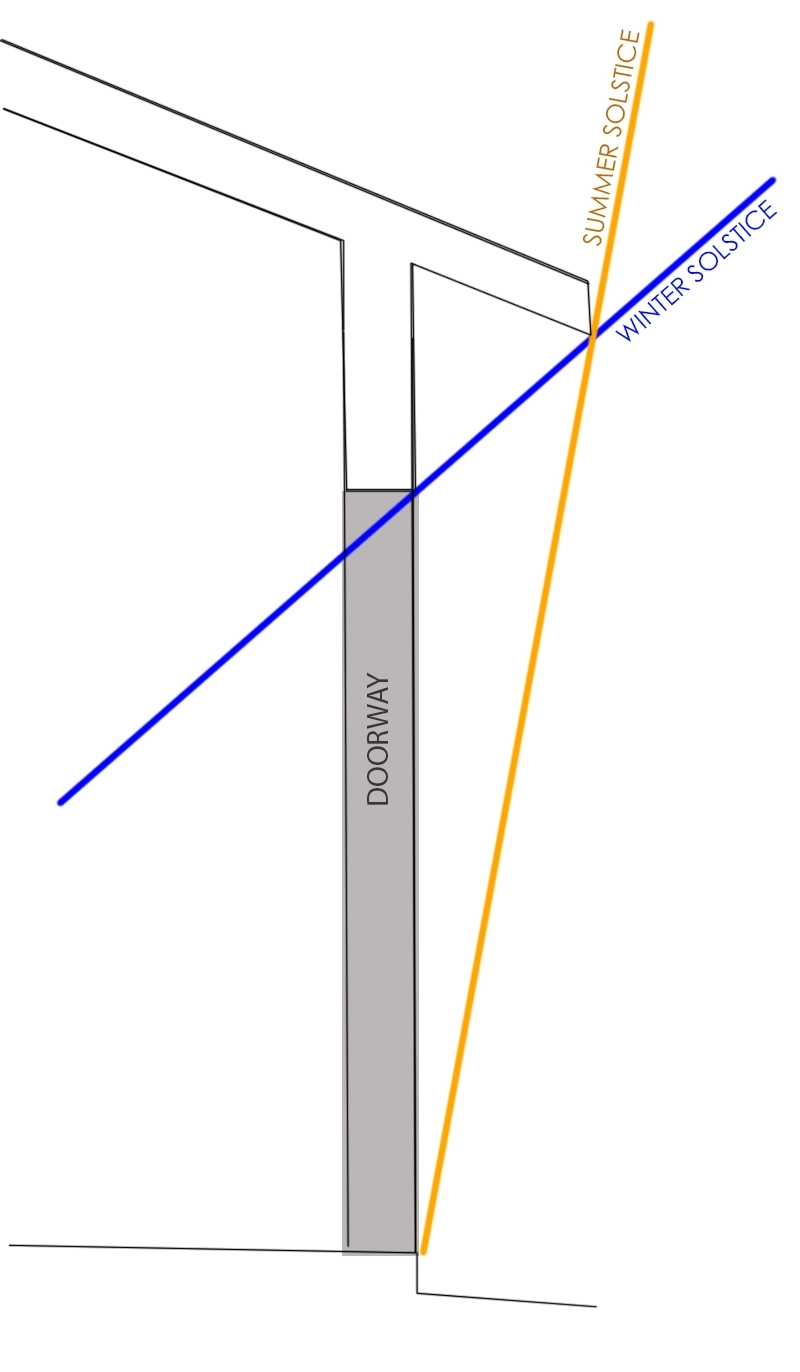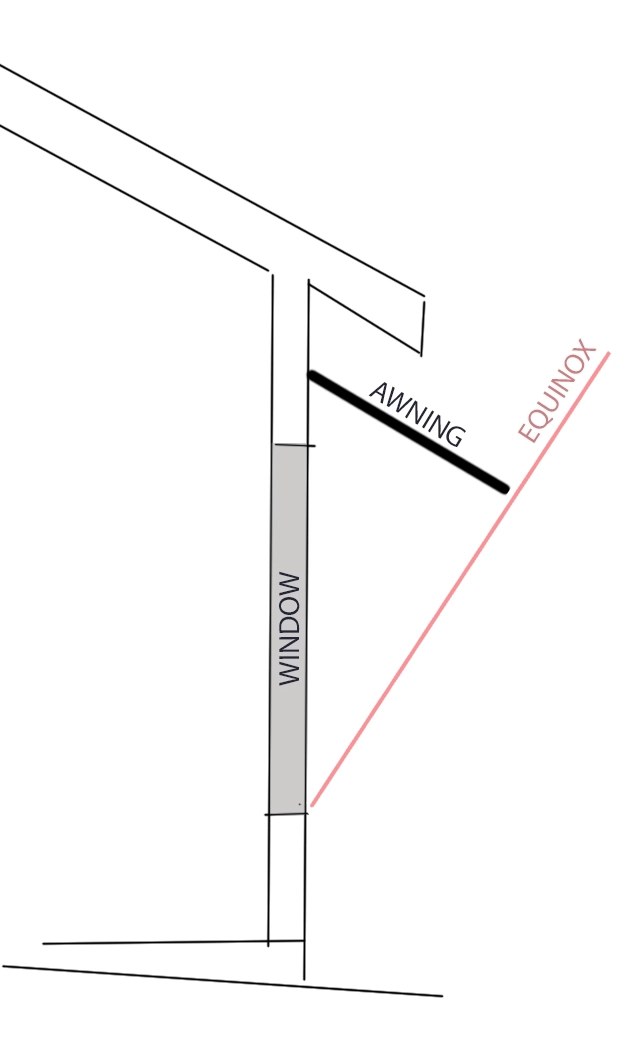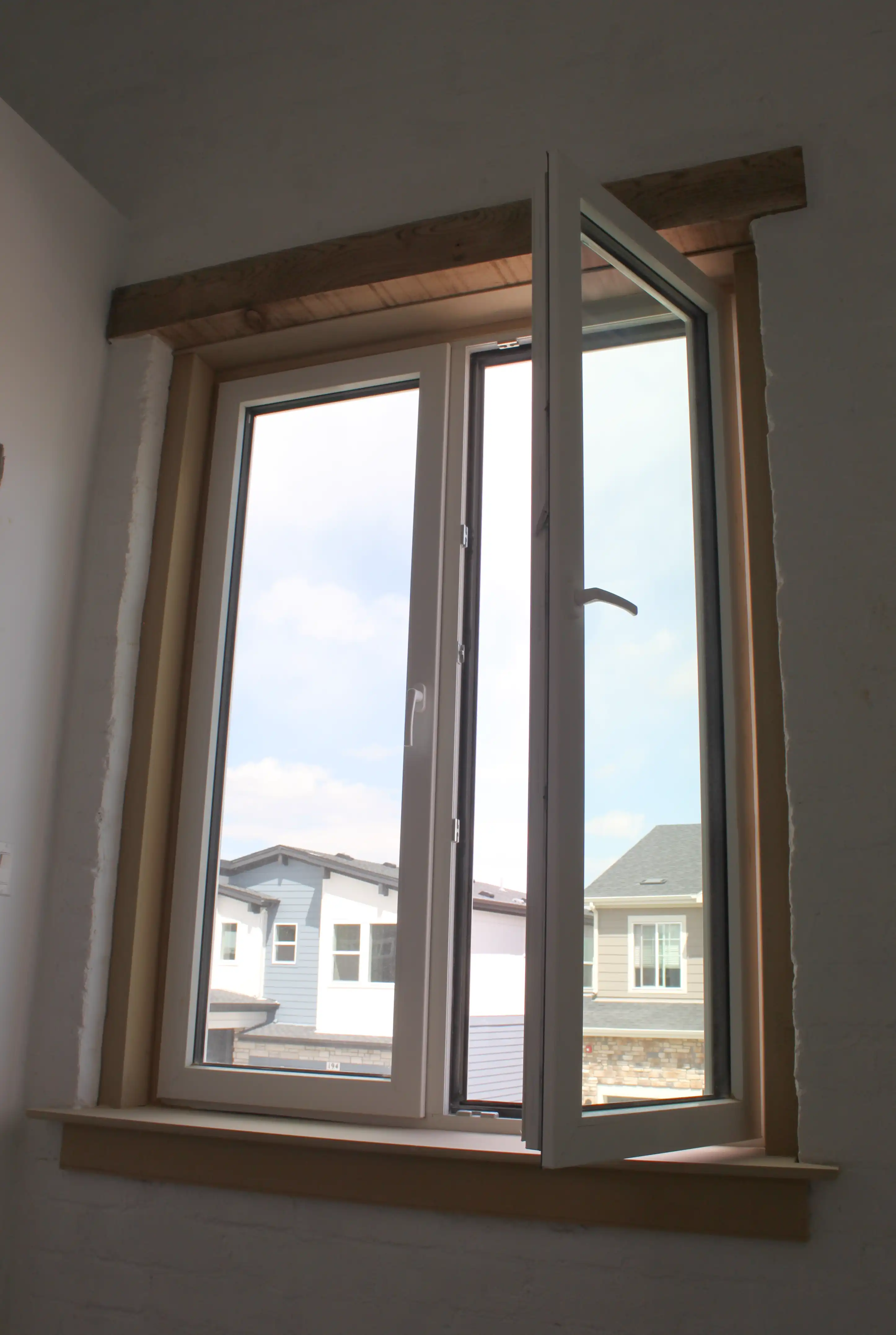Maximize Thermal Mass Efficiency
with Passive Solar Design
 South ==>
South ==>Passive solar design makes the most of the sun's energy for heating, cooling, and lighting. It focuses on how a building is oriented, the materials used, and various design features to boost energy efficiency and comfort. The key to great passive solar design is tailoring strategies to fit the unique environmental, cultural, and functional needs of each project, rather than relying on a one-size-fits-all approach, ensuring the best performance and comfort for each unique situation.
Key Strategies for Passive Solar Design
Building Orientation & Site Considerations
- Orient the building to maximize exposure to the sun. In the Northern Hemisphere, this typically means facing the longest walls toward the south to receive the most sunlight in winter while minimizing exposure in the summer.
- Assess the local landscape for features that can aid in passive solar strategies, such as hills, trees, or bodies of water.
- Take into account seasonal variations and your location to determine the best approach for maximizing energy efficiency throughout the year.
 Overhang Design - Solstice Sun Angle for Cool Climates
Overhang Design - Solstice Sun Angle for Cool ClimatesStrategic Shading
-
Add South-facing roof overhangs, pergolas, or awnings designed to
block direct summer sunlight while allowing lower-angled winter sun to
enter. To ensure year-round effectiveness, calculate the sun's angle at
solar noon during the winter and summer solstices based on the
building's latitude.
This approach helps
provide shade in the hottest months while allowing sunlight to warm the
interior in colder months.
- West-facing windows experience lower sun angles later in the day, as the sun sits much lower than it does at noon. For this reason, deeper porch roofs are more effective at blocking western low-angle rays.
- Plant deciduous trees around the building, particularly
on the south and west sides, to provide natural shade during the summer
months while allowing sunlight through in winter
after the leaves have fallen.
- Low-emissivity (low-E) window coatings offer a way to control heat gain without sacrificing views and allowing natural sunlight to illuminate the space.
Thermal Mass
- Incorporate high thermal mass materials, like compressed earth block, to absorb, store, and release solar heat. Position these materials in areas that receive direct sunlight during the day.
Insulation Standards
- Adequate insulation reduces heat loss in the winter and heat gain in the summer, improving energy efficiency and maintaining comfortable indoor temperatures. Standards vary by region and climate zone, with colder areas requiring higher R-values to minimize heat loss.
- Exterior insulation is often recommended for passive solar design to prevent thermal bridging, where heat bypasses the insulation through structural elements.
- Use high-performance glazing or double-pane windows to improve insulation.
Using Equinox Sun Angles to Size Overhangs in Warm Climates
 Overhang Design - Equinox Sun Angle for Warm Climates
Overhang Design - Equinox Sun Angle for Warm ClimatesIn warmer climates, properly sized awnings and roof overhangs can significantly reduce unwanted solar heat gain during the hottest parts of the year. One effective strategy is to use the spring and fall equinox sun angles - when the sun sits at a midpoint in the sky - as a guide for designing shading on the southern side of a home.
The idea is simple:
- In summer, when the sun is high overhead, the overhang blocks direct sunlight from entering south-facing windows.
- In winter, when the sun sits lower in the sky, the sunlight can pass underneath the overhang and help warm the interior.
- At the equinox, which falls around March 21 and September 21, the sun angle is roughly midway between the extremes - making it a great reference point for shaping overhangs that balance summer shading with winter solar gain.
For example, Denton, TX, the sun is about 57° above the horizon at solar noon on the equinox. A simple rule of thumb: if you design your overhang to fully shade a window when the sun is at 57°, you’ll block even more sun during summer (when the sun is higher) and still allow low-angle winter sunlight in.
When planning your overhang:
- Use solar geometry or a sun angle calculator to determine how far out the overhang needs to project to block the sun at your location.
- Consider trees or landscape features that may provide additional shading or filtering of low-angle sun.
By shaping your overhangs based on the equinox sun angle you’re adding shade and actively improving comfort, reducing cooling loads, and using the sun's seasonal movement to your advantage. See the Whole Building Design Guide’s Sun Control and Shading Devices for detailed guidance on sizing fixed overhangs.
Natural Ventilation and Airflow
Natural ventilation is the preferred approach in certain climates, particularly in stable equatorial regions where mild, consistent temperatures make it a practical choice over air-tight construction. However, it is less effective in climates with extreme temperatures, high humidity, or unpredictable weather, where maintaining indoor comfort and air quality often requires mechanical systems.
- Encourage Airflow: Operable windows, vents, and strategically placed openings can create a cooling breeze.
- "Stack effect" Ventilation: Warmer air naturally rises and exits through higher openings, drawing cooler air from lower levels.
- Inner Courtyards: Courtyards can promote natural ventilation and serve as a cooler air source, especially when shaded. They allow air to circulate, cooling down as it moves through shaded areas, which can be drawn into adjacent spaces.
- Water Features: Water has a natural cooling effect due to evaporation, which can lower the surrounding air temperature. Positioned strategically, water features help pre-cool the air before it enters indoor spaces.
- Ventilated Transom Windows: Transom windows above doors or windows are commonly used for airflow. They allow cooler air to flow from areas like courtyards or shaded spaces, promoting cross-ventilation that can help reduce interior temperatures.
